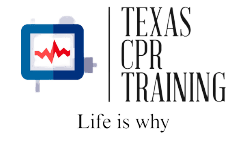
Stroke
Every 40 seconds an American has a stroke and every 4 minutes another dies as a result. It is estimated that 800.000 people have a stroke each year. It is the 5th leading cause of death for Americans in general, and they are the 3rd leading cause of death for African Americans.
Strokes are the result of blood supply problems to the brain in which either the blood supply is blocked or a blood vessel ruptures causing brain tissue to die. There are three different types of strokes ischemic, hemorrhagic, transient ischemic attacks (TIAs).
Ischemic Strokes
Ischemic strokes are the most common as they account for approximately 85% of all strokes. Blockages or narrowing of the arteries that supply blood to the brain severely reduce the blood flow resulting in ischemia. Blood clots often cause ischemia and are formed in blood vessels or arteries connected to the brain and are then swept into the bloodstream and into narrow arteries in the brain. These potentially lethal clots are a build up of fatty deposits in the arteries called plaque.
Hemorrhagic Strokes
Hemorrhagic strokes are caused by arteries in the brain either busting open or leaking and resulting in the leaked blood putting pressure on the brain cells which damages them. Intracerebral hemorrhages are the most common type of hemorrhagic stroke which occurs when the brain tissue is flooded after an artery bursts. The less common hemorrhagic stroke is a subarachnoid hemorrhage in which bleeding occurs in the area between the brain and the tissue covering it. These detrimental ruptures can occur as a result of the use of blood thinners and weakness in blood vessel walls (aneurysms), or from hypertension.
Transient Ischemic Attacks
Transient ischemic attacks (TIAs) are similar to ischemic strokes because they are most often caused by blood clots and debris. A TIA occurs when the blood flow to the brain is interrupted for a short period of time. Although the blood flow is only briefly interrupted, a TIA is a serious medical occurrence. It is estimated that one third of people that experience a transient ischemic attack have a major stroke if they do not receive treatment.
Strokes come on quickly and suddenly without warning. It is essential to know the signs and symptoms of a stroke and TIAs.
Signs and Symptoms of a Stroke
Signs and symptoms include:
– Headache (possibly with vomiting or altered consciousness)
– Difficulty walking (dizziness and lack of co-ordination)
– Difficulty seeing (one or both eyes)
– Numbness of an arm, leg, and/or face (especially on one side)
– Confusion, trouble with understanding or speaking
Act F.A.S.T.
F – FACE: Ask the person to smile. Does one side of the face droop?
A – ARMS: Ask the person to raise both arms. Does one arm drift downward?
S – SPEECH: Ask the person to repeat a simple phrase. Is their speech slurred or strange?
T – TIME: If you observe any of these signs, call 9-1-1 immediately.
If you or someone close to you exhibits these symptoms dial 911 immediately. The quicker someone having a stroke receives medical treatment the more positive their outlook will be. A person having a stroke needs to be treated at a hospital within 3 hours of the onset of their symptoms.
Treating a Stroke
In order to properly treat a patient’s stroke the doctors need to know what kind of stroke the patient has endured. The doctors will chart their symptoms, medical history, blood pressure, and listen to the carotid arteries to check for indications of clotting. They will also perform blood tests and conduct CT and MRI scans, carotid ultrasounds, cerebral angiogram, and an echocardiogram.
Once the type of stroke is determined the doctors will administer medication and determine if an emergency procedure is necessary. Ischemic strokes sometimes even require medications to be directly delivered to the brain via a catheter. Doctors might also use a catheter to mechanically remove the clot causing the stroke.
In the instance of a TIA doctors often recommend procedures to prevent a stroke in the future such as a carotid endarterectomy. During a carotid endarterectomy the surgeon will remove plaques from the arteries that run along the side of the patient’s neck. Although this procedure may prevent a future ischemic stroke, it does involve risks especially for patients with heart disease and other conditions. The doctor may also order a stent be placed in an artery to prevent further incidents.
If the stroke victim becomes unresponsive be prepared to administer CPR.
American Stroke Association
National Stroke Association
Mayo Clinic
